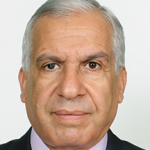Abstract
While the demand for higher education increased sharply between 1995-2005, Palestinian academic institutions (universities and community colleges) continued to suffer from budget deficits., Meanwhile, the role of the private sector in financially supporting the academic institutions is still insignificant. Also, the contribution of the Palestinian National Authority (PNA) to financing higher academic institutions is still inadequate. Currently, public funds paid by the PNA cover less than 10% of the academic institutions’ expenditures. In fact, the PNA has made it clear that it looks to academic institution to rely more on private finance. Thus, this study aims to come up with a set of policies required to enhance the capacity of private sector investment in higher education ─ whether partial or total. To accomplish this objective, an econometric model is specified and estimated utilizing primary data. A questionnaire id designed to collect primary data to assess the attitudes of the private sector toward investing in the Palestinian higher education.
The results of this research are of interest to several parties, agencies and institutions, mainly ministries of education and higher education and labor and academic institutions. In particular, the study highlights the patterns of investments that should be applied by the private sector in the Palestinian higher education. It also focuses on the appropriate policy variables that could be employed to stimulate private investments in higher education and to enhance the integration between academic institutions and the private sector.
ملخص
على الرغم من الارتفاع الحاد في الطلب على التعليم العالي في الفترة 2005-1995 ظلت المؤسسات الفلسطينية الأكاديمية (الجامعات والكليات المجتمعية) تعاني من عجز مستمر في ميزانيتها. ومع هذا، ظل دور القطاع الخاص في تمويل المؤسسات الأآاديمية غير ذي بال. كما ظلت المساهمات التي قدمتها السلطة الفلسطينية لدعم هذه المؤسسات غيركافية. فالتمويل الذي تقدمه السلطة الفلسطينية يمثل أقل من 10 في المئة من نفقات المؤسسات الأكاديمية. و قد أكدت السلطة الفلسطينية على أنها تريد مؤسسات أكاديمية تعتمد بشكل أكبر على تمويل القطاع الخاص. ولذلك تهدف الدارسة إلى الوصول إلى مجموعة من السياسيات اللازمة لرفع مقدرة القطاع الخاص الفلسطيني على الاستثمار بشكل جزئي أو كلى في التعليم العالي؛ وللوصول إلى هذا، يجري تحديد وتقييم نموذج اقتصادي قياسي في ضوء المعلومات الأولية. كما تم صياغة استقصاء للحصول على معلومات أولية لتقييم مواقف القطاع الخاص من الاستثمار في قطاع التعليم العالي الفلسطيني. وتهم نتائج هذا البحث العديد من الجهات والهيئات والمؤسسات، لا سيما وزارات التعليم والتعليم العالي والعمال والمؤسسات الأكاديمية. وتهتم الدراسة بصفة خاصة بنماذج الاستثمارات التي يجب أن يطبقها القطاع الخاص في قطاع التعليم العالي الفلسطيني؛كما تركز على البدائل المناسبة التي يمكن استخدامها لتنشيط استثمارات القطاع الخاص في التعليم العالي وتعزيز التكامل بين المؤسسات الأكاديمية والقطاع الخاص



